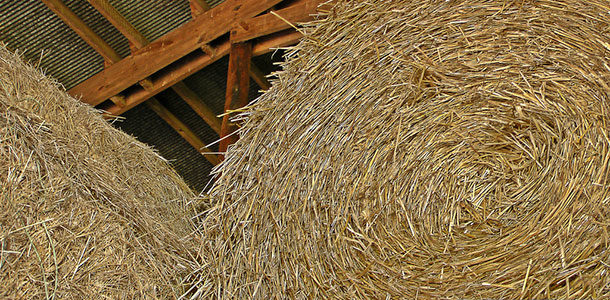The surplus moisture certainly pays off with increased forage supplies and lower average prices. However, surplus moisture received during and since the harvest season can be quite damaging to quality of stored forages.

As we progress through winter, many producers find themselves evaluating forage inventories and often purchasing or marketing stored forages prior to the 2014 growing season. It is important to keep in mind several forage quality factors that give a good estimate of how much bang you are receiving for that buck.
Request forage quality test information
Forage quality can vary greatly based on harvest conditions. Many forage stands were harvested a late maturity due to untimely rain events. Later maturity at harvest is the greatest negative influencer of forage quality.
Be aware of harvest and storage conditions
Forages that were rained on after cutting and prior to baling may have reduced quality and nutrient content. Storing forages unprotected outdoors may also result in reduced quality due to spoilage or reduced quality due to nutrient leaching.
Purchase forages based on per ton cost
This seems to be a more common practice in the West compared to the East. Each operator and piece of equipment handles forages differently. Bales of hay similar in size often vary in weight by as much as a couple hundred pounds. Moisture content can also play a large role in weight variation. This lost weight can add up in value quickly.
Most university and extension programs offer resources for identifying forage quality measures relative to your area. Keeping these best practices in mind can go a long way in providing a better relationship between both parties when marketing stored forages. FG
Ryan Goodman
Communications Manager
Montana Stockgrowers Association
PHOTOS
TOP: Hay stored properly will help retain nutrients.
BOTTOM: Hay stored improperly reduces quality and value. Photos courtesy of Ryan Goodman.









